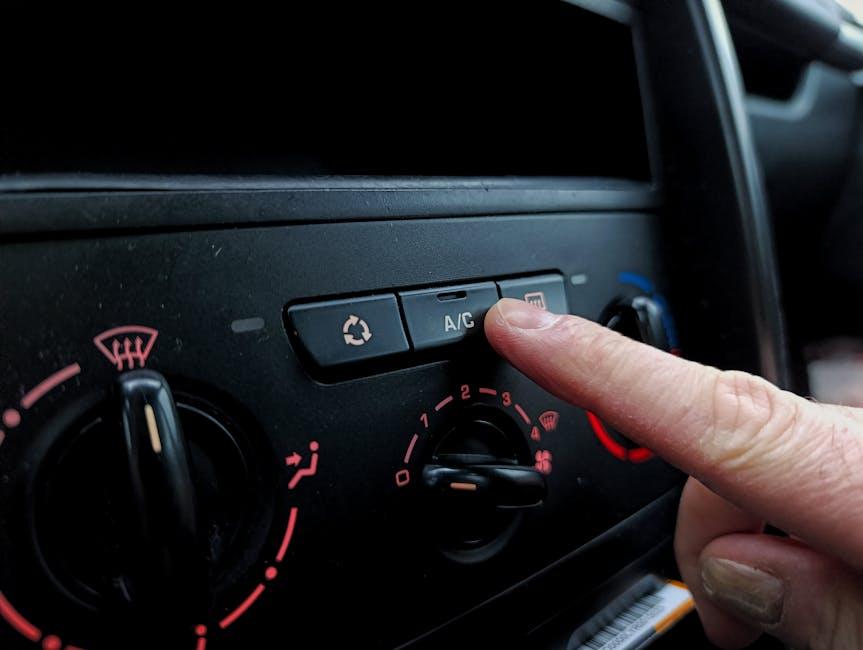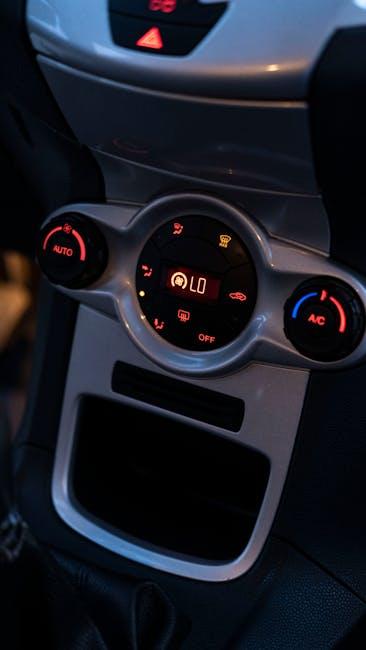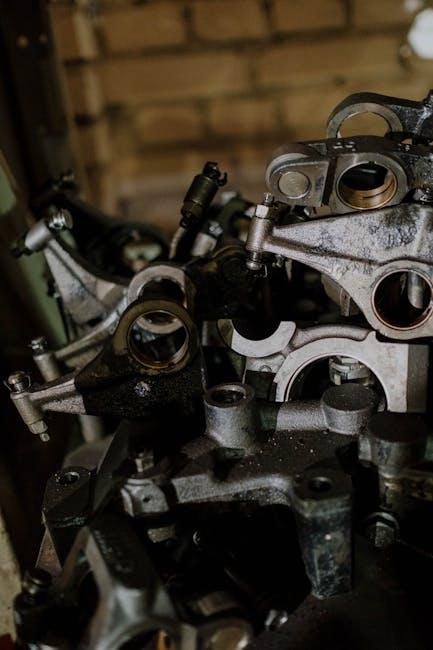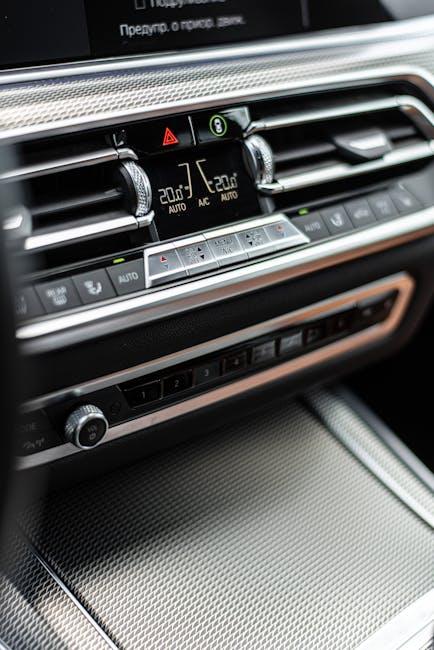When the summer sun blazes and the city streets shimmer with heat, a car’s air conditioning system becomes more than just a convenience—it’s a vital source of comfort. Yet, nothing is more frustrating than stepping into a stifling cabin where the AC struggles to keep up. Improving your car’s air conditioning performance doesn’t require an overhaul or a mechanic’s help; with a few smart adjustments and regular upkeep, you can transform your ride into a cool refuge. In this guide, we’ll explore practical strategies and essential tips to help you revive and optimize your car’s AC system, ensuring that every drive remains refreshingly comfortable no matter how high the mercury rises.
Table of Contents
- Understanding the Basics of Your Car AC System
- Identifying Common Causes of Reduced Cooling Efficiency
- Routine Maintenance Tips to Keep Your AC Running Smoothly
- Choosing the Right Refrigerant and When to Recharge
- The Role of Cabin Air Filters in Enhancing Airflow
- Upgrading Components for Peak Performance and Longevity
- Q&A
- Key Takeaways

Understanding the Basics of Your Car AC System
At the core of every car’s air conditioning system is a carefully orchestrated network of components working together to provide cool, refreshing air on demand. Key elements include the compressor, which pressurizes the refrigerant; the condenser, which dissipates heat; and the evaporator, where the magic of cooling happens. When you turn on your AC, refrigerant circulates through these parts, absorbing heat from inside the cabin and releasing it outside. Understanding this cycle helps reveal why maintenance is vital—any disruption or leak weakens the system’s ability to cool effectively.
Regular upkeep ensures all components function smoothly. For instance, drivers should be aware of signs such as reduced airflow, unusual noises, or unpleasant odors, which may indicate underlying issues. Simple practices like replacing the cabin air filter on time or checking refrigerant levels can significantly enhance performance. Below is a quick reference table of common AC parts and their roles:
| Component | Function |
|---|---|
| Compressor | Pressurizes and circulates refrigerant |
| Condenser | Releases heat to the outside air |
| Evaporator | Absorbs heat from inside the car |
| Expansion Valve | Controls refrigerant flow and pressure |

Identifying Common Causes of Reduced Cooling Efficiency
When your car’s air conditioning system starts to lose its chill, it can be frustrating and uncomfortable, especially on hot days. Often, the culprit lies in common issues that restrict airflow or reduce refrigerant effectiveness. One frequent cause is a clogged cabin air filter, which blocks fresh air from circulating freely. Another typical problem involves a low refrigerant level, as leaks over time can diminish the cooling capacity drastically. Additionally, electrical faults or faulty compressor components can impede the AC’s performance, leading to uneven cooling or complete system failure.
Understanding these factors early on can save you time and money in repairs. Below is a quick reference guide to typical reasons behind reduced AC efficiency, complete with symptoms and suggested checks:
| Issue | Symptom | Suggested Action |
|---|---|---|
| Clogged Cabin Air Filter | Weak airflow, musty smell | Check & replace every 12,000 miles |
| Low Refrigerant | Warm air blowing, hissing noises | Test pressure, recharge or fix leaks |
| Compressor Fault | Clicking sounds, AC turns off intermittently | Inspect compressor clutch and wiring |
| Condenser Blockage | High engine temps, poor cooling | Clear debris and clean regularly |

Routine Maintenance Tips to Keep Your AC Running Smoothly
Maintaining your car’s air conditioning system doesn’t have to be a hassle. Regularly checking and replacing the cabin air filter can drastically improve airflow and reduce strain on the compressor. Remember to clean the AC vents and ensure that no debris or dust particles clog the airflow path. Another tip is to run the AC system on “fresh air” mode periodically rather than just recirculating the interior air; this helps prevent moisture buildup and keeps the system functioning efficiently.
Keep an eye on key components such as refrigerant levels and AC belts. Low refrigerant causes poor cooling performance and can damage the compressor, so refilling it at the right intervals is crucial. Also, visually inspecting belts for wear and tear and replacing them as needed safeguards smooth operation. Here’s a quick reference table for routine AC checks you can perform to keep everything in top shape:
| Maintenance Task | Frequency | Benefit |
|---|---|---|
| Cabin Air Filter | Every 12,000-15,000 miles | Improves airflow and air quality |
| Refrigerant Level Check | Annually or as needed | Maintains cooling efficiency |
| AC Belt Inspection | Every 20,000 miles | Prevents system breakdown |
| Vent Cleaning | Every 6 months | Ensures optimal airflow |

Choosing the Right Refrigerant and When to Recharge
Selecting the optimal refrigerant for your car’s AC system is crucial for maintaining efficient cooling and protecting the environment. Modern vehicles typically use R-134a or the newer, more eco-friendly R-1234yf, due to their lower impact on global warming. Before topping up your refrigerant, consult your vehicle’s manual or a trusted mechanic to ensure compatibility. Using the wrong type can cause damage to the compressor and other components, reducing your AC’s lifespan. Additionally, improper handling or overcharging can lead to system malfunctions or decreased performance.
Knowing when to recharge your refrigerant is just as important as the type you choose. Key signs that your car needs a recharge include:
- Weak or warm airflow even on the coldest AC settings
- Unusual hissing sounds indicating leaks
- Longer cooling times after starting your car
Regular inspections can help catch leaks early and prevent costly repairs. Check your AC system every 1-2 years, especially if you notice any of these symptoms. Here’s a quick reference table highlighting common refrigerants and their primary features:
| Refrigerant | Environmental Impact | Common Use | Key Benefit |
|---|---|---|---|
| R-134a | Moderate GWP | Most cars pre-2015 | Widely available, reliable |
| R-1234yf | Low GWP | Newer car models | Eco-friendly, efficient |
| R-12 (obsolete) | High GWP | Older classic cars | Not recommended due to ban |

The Role of Cabin Air Filters in Enhancing Airflow
Cabin air filters play a crucial role in maintaining optimal airflow within your vehicle’s air conditioning system. Over time, these filters become clogged with dust, pollen, and other airborne contaminants, restricting the amount of air that can circulate freely through the vents. A clean cabin air filter not only ensures refreshing and crisp air but also reduces strain on the AC system, allowing it to perform more efficiently. Regularly inspecting and replacing your cabin filter can dramatically enhance airflow, resulting in a cooler and more comfortable ride, especially during hot summer days.
Neglecting the cabin air filter can lead to multiple issues, such as unpleasant odors and increased allergens inside the vehicle. To help maintain healthy airflow, consider these maintenance tips:
- Check the filter every 12,000 to 15,000 miles or more frequently if you drive in dusty conditions.
- Replace the filter with high-quality, OEM parts suited for your car model to ensure optimal fit and performance.
- Keep vents clean, as buildup can also obstruct airflow even with a clean filter in place.
| Filter Condition | Effect on Airflow | Replacement Frequency |
|---|---|---|
| New | Maximum airflow, fresh air | 12,000-15,000 miles |
| Moderately Dirty | Reduced airflow, slight odor | Consider replacement soon |
| Clogged | Minimal airflow, increased AC strain | Replace immediately |

Upgrading Components for Peak Performance and Longevity
To ensure your car’s air conditioning system operates at its best and lasts longer, consider upgrading key components with high-quality parts designed for durability and efficiency. Swapping out the traditional compressor for a variable displacement compressor can significantly enhance cooling performance while reducing energy consumption. Additionally, upgrading to a modern condenser with improved airflow can help the system cool the refrigerant more effectively, preventing overheating and extending the life of your AC unit. Don’t overlook the value of installing a high-capacity cabin air filter that not only improves air purity but also reduces strain on the blower motor.
When making these upgrades, it’s helpful to understand how each component contributes to the system’s effectiveness. Here’s a snapshot comparing standard parts versus upgraded components for clearer decision-making:
| Component | Standard Option | Upgraded Option | Benefits |
|---|---|---|---|
| Compressor | Single-speed | Variable displacement | Energy efficient, quieter, better temp control |
| Condenser | Basic aluminum core | High-efficiency multi-finned | Faster heat dissipation, longer lifespan |
| Cabin Air Filter | Particle filter | Activated carbon filter | Improved air quality, odor reduction |
Q&A
Q: Why is my car’s AC blowing warm air instead of cold?
A: Several factors can cause this issue, including low refrigerant levels, a clogged cabin air filter, or a malfunctioning compressor. Often, refrigerant leaks are the culprit, so it’s wise to have the system checked for leaks and recharged if necessary.
Q: How often should I service my car’s air conditioning system?
A: To keep your car’s AC in tip-top shape, servicing it at least once a year is advisable—preferably before the summer heat kicks in. Regular maintenance helps detect leaks, replace filters, and ensure all components function smoothly.
Q: Can a dirty cabin air filter affect AC performance?
A: Absolutely. A clogged or dirty cabin air filter restricts airflow, leading to reduced cooling efficiency. Replacing or cleaning the filter every 12,000 to 15,000 miles—or more frequently if you drive in dusty conditions—can improve air quality and cooling power.
Q: What role does refrigerant play in keeping the car cool?
A: Refrigerant is the lifeblood of your car’s AC system, absorbing heat and releasing it outside the vehicle. Low refrigerant levels mean less cooling ability, so maintaining adequate refrigerant is essential for optimal performance.
Q: Are DIY fixes effective for improving AC performance?
A: Simple steps like cleaning the cabin air filter, checking for visible leaks, or ensuring condenser fins are clean can help. However, complex tasks such as refrigerant recharging and compressor repair are best handled by professionals to avoid damage.
Q: How can I prevent my car AC from losing efficiency over time?
A: Running your AC periodically during colder months keeps system components lubricated and prevents seals from drying out. Also, parking in the shade, washing condenser coils, and avoiding overuse can prolong your system’s lifespan.
Q: What signs indicate that my car’s AC compressor might be failing?
A: Listen for unusual noises like grinding or squealing when the AC is on, or notice if the air stops cooling altogether despite regular maintenance. These symptoms often point to compressor issues that require prompt inspection and repair.
Q: Does tinted or reflective window film improve AC performance?
A: Yes. Installing tinted or reflective films reduces the amount of heat entering the cabin, decreasing the workload on the AC system and helping maintain cooler interior temperatures more efficiently.
Q: How does regular use impact AC longevity?
A: Using the AC regularly, even in winter, circulates refrigerant and lubricates seals and hoses, preventing leaks and breakdowns. Neglecting use can lead to premature wear and reduced performance when you need it most.
Q: When is it time to replace the car’s AC system?
A: If repairs become frequent, costs escalate, or the system fails to cool effectively despite servicing, replacement may be the most practical option. Advances in technology also mean newer systems can be more efficient and eco-friendly.
Key Takeaways
Improving your car’s AC performance is more than just a comfort upgrade—it’s a way to transform every drive into a refreshing escape. By understanding the basics, performing regular maintenance, and addressing any issues promptly, you can keep your system running smoothly and efficiently. Whether you’re cruising through city streets or embarking on a long road trip, a well-tuned AC ensures the perfect climate, making every journey a breath of fresh air. Remember, a little care today can lead to cooler, more comfortable rides tomorrow.

